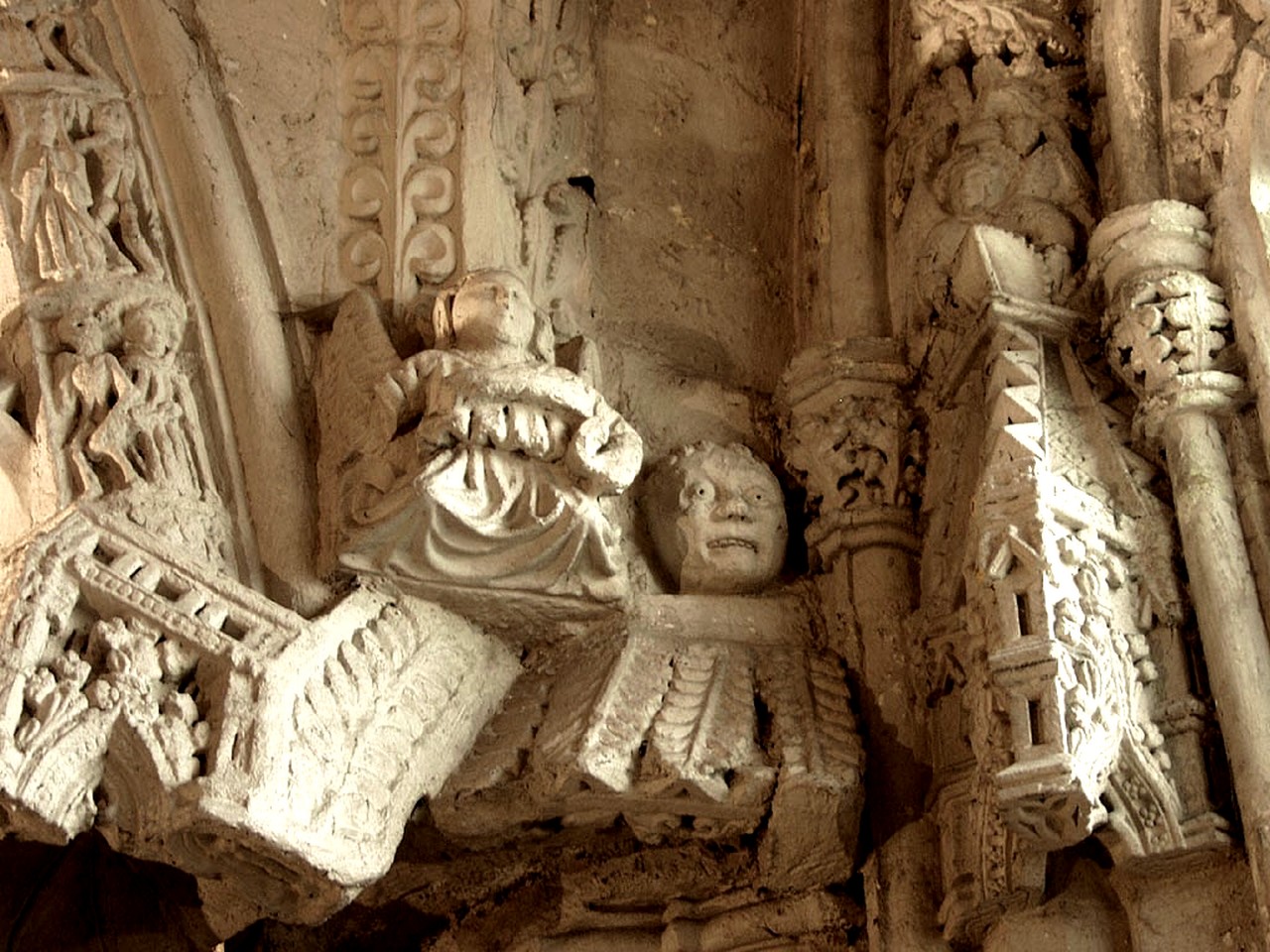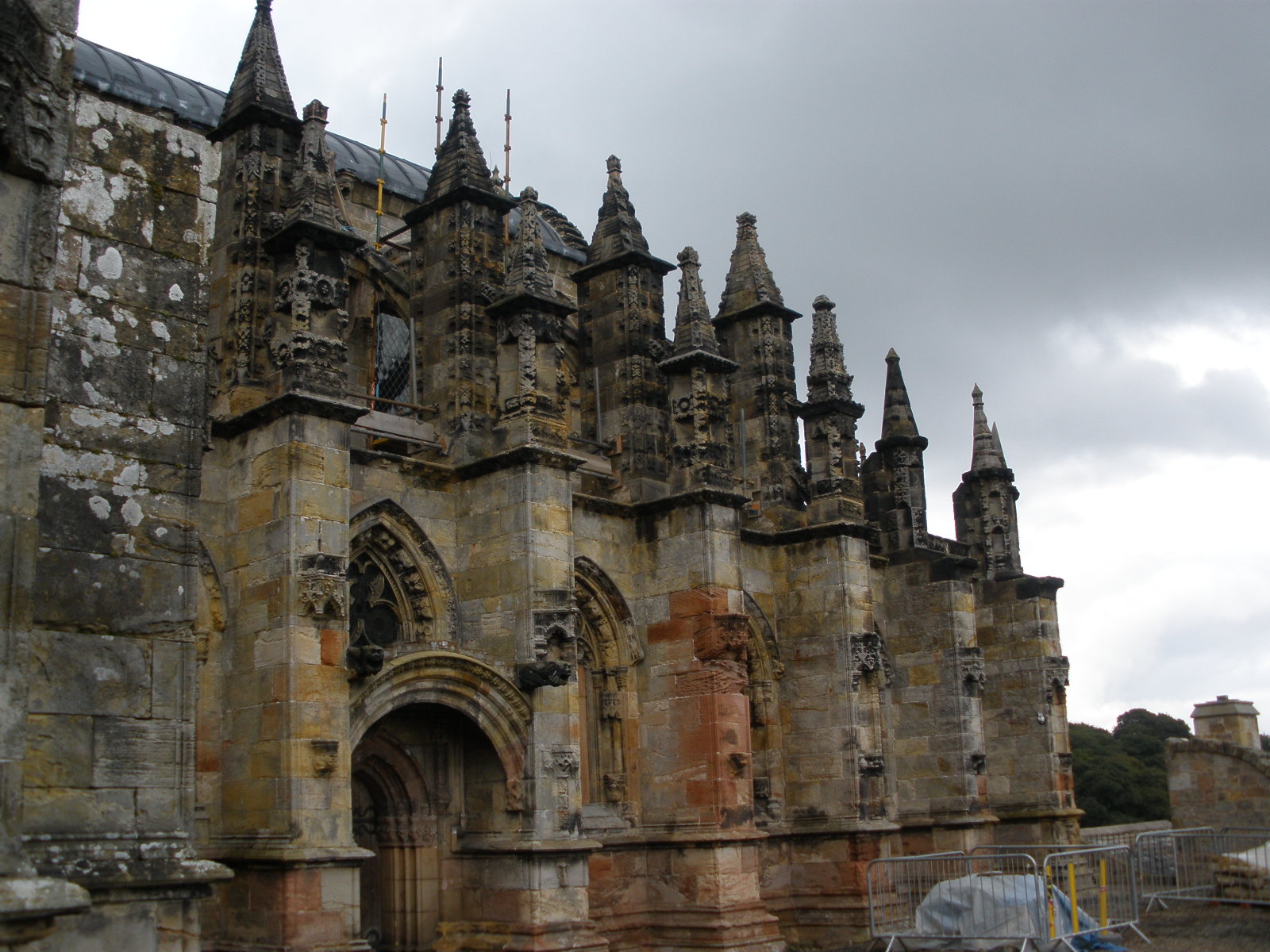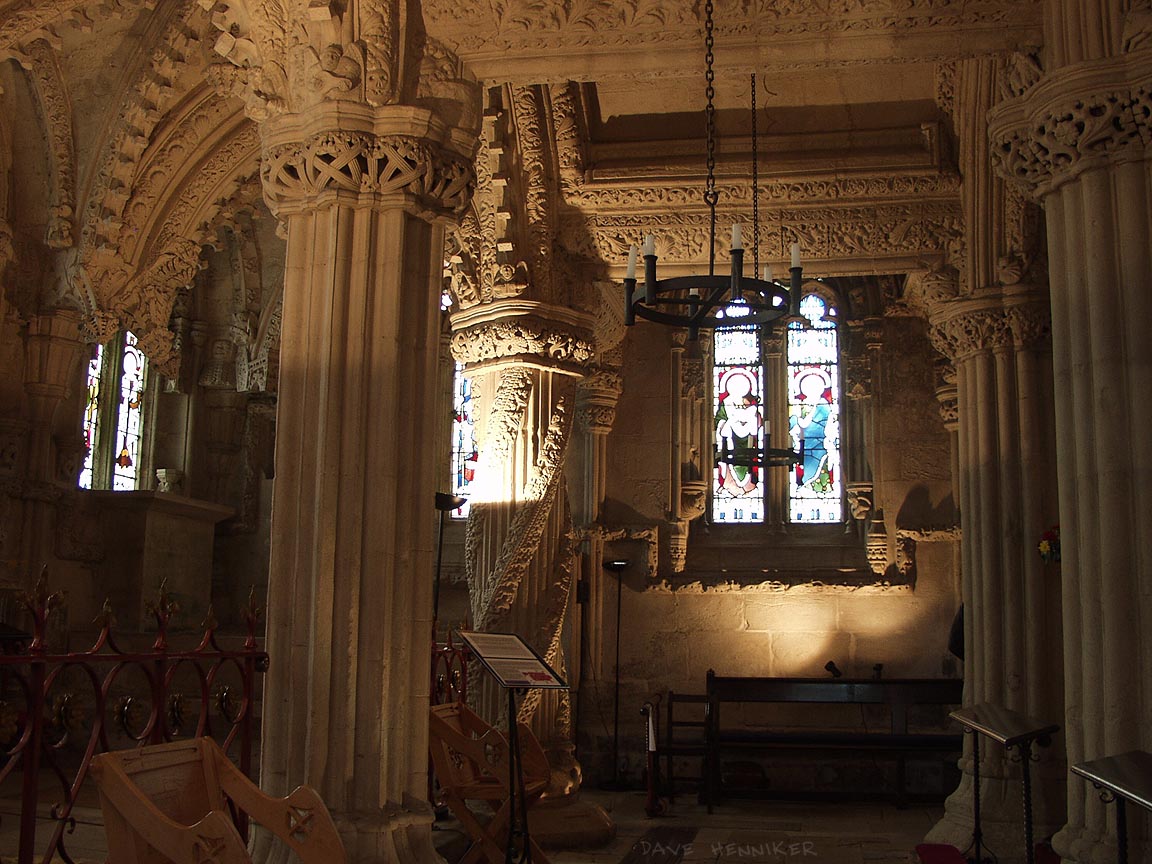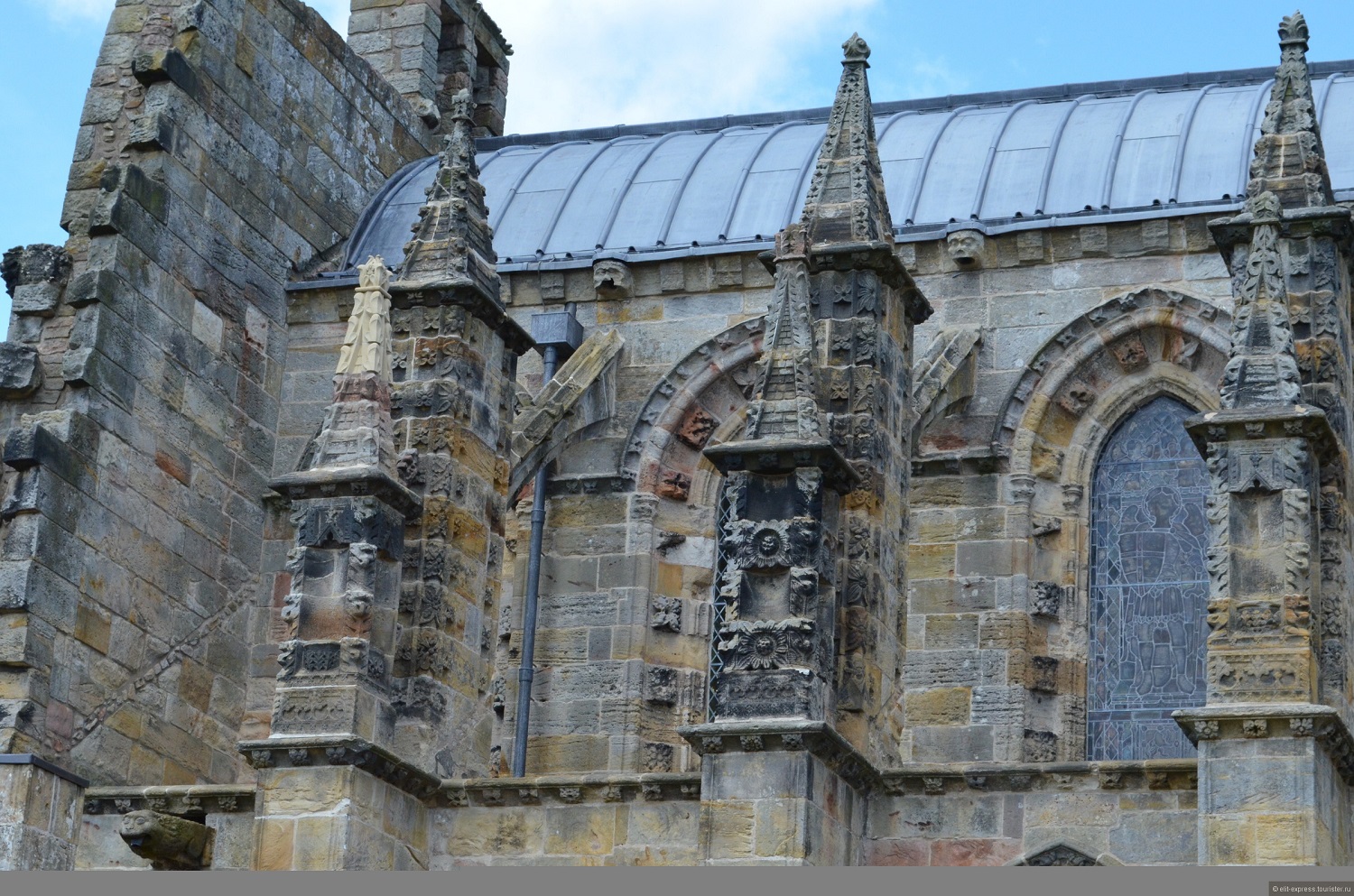Rosslyn Chapel, formally known as the Collegiate Chapel of St Matthew, is a 15th-century chapel located at the village of Roslin, Midlothian, Scotland.
Rosslyn Chapel was founded on a small hill above Roslin Glen as a Catholic collegiate church (with between four and six ordained canons and two boy choristers) in the mid-15th century. The chapel was founded by William Sinclair, 1st Earl of Caithness of the Scoto-Norman Sinclair family. Rosslyn Chapel is the third Sinclair place of worship at Roslin, the first being in Roslin Castle and the second (whose crumbling buttresses can still be seen today) in what is now Roslin Cemetery.
The purpose of the college was to celebrate the Divine Office throughout the day and night and also to celebrate Holy Mass for all the faithful departed, including the deceased members of the Sinclair family. During this period the rich heritage of plainsong (a single melodic line) or polyphony (vocal harmony) would be used to enrich the singing of the liturgy. An endowment was made that would pay for the upkeep of the priests and choristers in perpetuity and they also had parochial responsibilities.
After the Scottish Reformation (1560), Roman Catholic worship in the chapel was brought to an end, although the Sinclair family continued to be Roman Catholics until the early 18th century. From that time the chapel was closed to public worship until 1861, when it was opened again as a place of worship according to the rites of the Scottish Episcopal Church.
Since the late 1980s, the chapel has also featured in speculative theories concerning a connection of Freemasonry, the Knights Templar, and the Holy Grail. It was prominently featured in the 2003 bestseller The Da Vinci Code and its 2006 film adaptation.
Rosslyn Chapel remains privately owned. The current owner is Peter St Clair-Erskine, 7th Earl of Rosslyn.
The original plans for Rosslyn have never been found or recorded, so it is open to speculation whether or not the chapel was intended to be built in its current layout. Its architecture is considered to be among the finest in Scotland.
Construction of the chapel began on 20 September 1456, although it has often been recorded as 1446. The confusion over the building date comes from the chapel's receiving its founding charter to build a collegiate chapel in 1446 from Rome. Sinclair did not start to build the chapel until he had built houses for his craftsmen.
Although the original building was to be cruciform in shape, it was never completed. Only the choir was constructed, with the retro-chapel, otherwise called the Lady chapel, built on the much earlier crypt (Lower Chapel) believed to form part of an earlier castle. The foundations of the unbuilt nave and transepts stretching to a distance of 90 feet were recorded in the 19th century. The decorative carving was executed over a forty-year period. After the founder's death, construction of the planned nave and transepts was abandoned - either from lack of funds, lack of interest or a change in liturgical fashion.
The Lower Chapel (also known as the crypt or sacristy) should not be confused with the burial vaults that lie underneath Rosslyn Chapel.
The chapel stands on fourteen pillars, which form an arcade of twelve pointed arches on three sides of the nave. At the east end, a fourteenth pillar between the penultimate pair form a three-pillared division between the nave and the Lady chapel. The three pillars at the east end of the chapel are named, from north to south: the Master Pillar, the Journeyman Pillar, and most famously, the Apprentice Pillar. These names for the pillars date from the late Georgian period — prior to this period they were called The Earl's Pillar, The Shekinah and the Prince's pillar.
The chapel's altars were destroyed in 1592, and the chapel was abandoned, gradually falling into decay.
In 1842 the chapel, now in a ruined and overgrown state, was visited by Queen Victoria, who expressed a desire that it should be preserved. Restoration work was carried out in 1862 by David Bryce on behalf of James Alexander, 3rd Earl of Rosslyn. The chapel was re-dedicated on 22 April 1862, and from this time, Sunday services were once again held, now under the jurisdiction of the Scottish Episcopal Church, for the first time in 270 years.
The Rosslyn Chapel Trust was established in 1995, with the purpose of overseeing its conservation and its opening as a sightseeing destination. The chapel underwent an extensive programme of conservation between 1997 and 2013. This included work to the roof, the stone, the carvings, the stained glass and the organ. A steel canopy was erected over the chapel roof for fourteen years. This was to prevent further rain damage to the church and also to give it a chance to dry out properly. Three human skeletons were found during the restoration. Major stonework repairs were completed by the end of 2011. The last major scaffolding was removed in August 2010.
A new visitor centre opened in July 2011. The chapel's stained-glass windows and organ were fully restored. New lighting and heating were installed. The expected cost of the restoration work is around £13 million, with about £3.7 million being spent on the Visitor Centre. Funding has come from various sources including Heritage Lottery Fund, Historic Scotland and the environmental body, WREN. Actor Tom Hanks also made a donation.
Photography and video have been forbidden in the chapel since 2008. The chapel sells commercially produced photos in its shop. In 2006, historian Louise Yeoman criticised the Rosslyn Chapel trust for "cashing in" on the popularity of the The Da Vinci Code, against better knowledge.
In the financial year of 2013-2014, Rosslyn Chapel recorded 144,823 visitors, the highest number since 2007-2008, when (at the height of popular interest induced by The Da Vinci Code), the number of visitors was close to 159,000.













